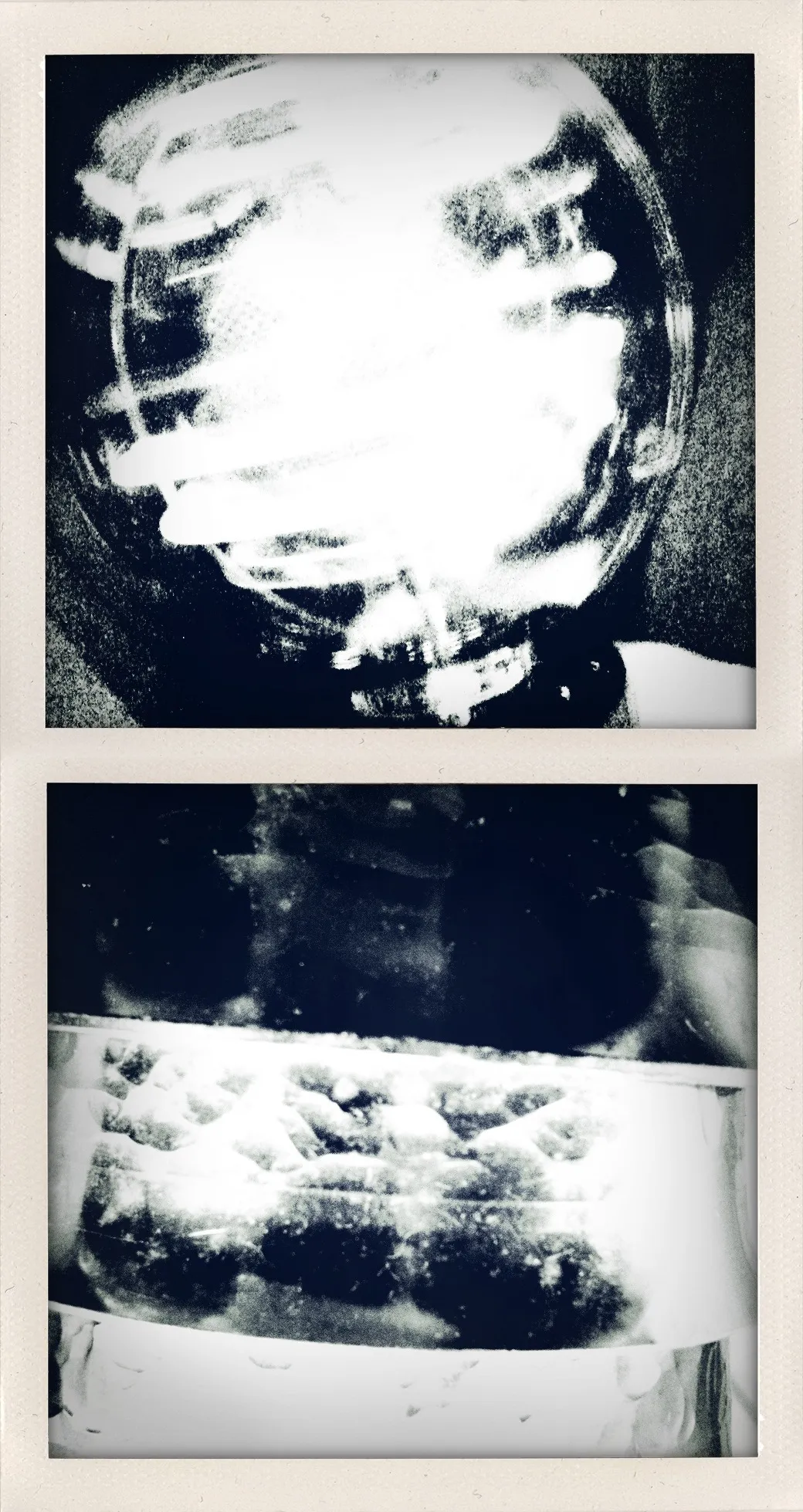Go-Go Dancer

This diptych captures a dancer fragmented into two registers, evoking motion through abstraction. The image critiques the spectacle and containment of performance, referencing the visual and social framing of go-go culture.
In Go-Go Dancer, the body becomes both subject and surface—a site of movement suspended in time. The diptych presents a black-and-white photographic study in fragmentation: the upper frame isolates the dancer’s head and arms, rendered as a luminous blur; the lower frame grounds the torso in a horizontal band of dense, ambiguous form. Taken together, these two panels form a single, displaced figure—active, disoriented, and entrapped within the rectangular cage of the photographic frame.
This image eschews conventional representation. Instead of offering the dancer in full form or gesture, it presents the residue of motion: smeared contours, overexposed highlights, and grainy shadows that resist resolution. The head appears spherical, almost helmet-like, encased in an orb of light and streaks. The arms, nearly indistinguishable, arc outward in chaotic rhythm. Below, the torso is reduced to a dense compression of light and shadow, a kind of abstracted core, bearing the force of motion through photographic stillness.
The monochrome palette intensifies this abstraction. The absence of color directs attention to texture and tonality—the interplay of light and dark becomes a stand-in for muscle, skin, and sequins. Grain dominates the surface, creating a palpable visual friction that echoes the dancer’s unresolved energy. The image feels physical not through depiction but through its materiality: the photographic grain evokes touch, sweat, vibration.
The structural design of the diptych invites a reading of the dancer as segmented, even surveilled. The faux-Polaroid border framing each panel recalls the Plexiglas boxes used to contain go-go performers in 1960s nightclubs, turning the viewer into a participant in the spectacle. The dancer is on display, yet also withheld—never fully visible, never fixed. The frame becomes both literal and symbolic: it offers access while enforcing boundaries.
In this way, Go-Go Dancer reflects on the aesthetics of performance under conditions of control. The go-go dancer, once an emblem of sexual liberation and countercultural energy, is refigured here through absence and distortion. Her agency is hinted at through movement, but the image speaks equally to surveillance, commodification, and the visual politics of entertainment. The fragmentation of the body parallels the fragmentation of identity in a culture that consumes performance without context.
Photographically, the work exploits the medium’s limits—motion blur, overexposure, grain—to question photography’s role in documenting performance. Rather than freezing time to reveal a dancer’s pose, the image captures time as velocity, obliteration, and erasure. What remains is not a record of performance but a ghost of it.
Go-Go Dancer resonates with broader cultural histories: it references both feminist critiques of objectification and media studies concerns with spectatorship and framing. The image embodies a tension between liberation and containment, rhythm and restriction, light and shadow. It suggests that to dance is to inhabit a paradox—moving freely, but always within the constraints of a frame, a gaze, a medium.
Ultimately, the image offers a study not just in movement, but in the politics of seeing. The dancer’s body—blurred, split, caged—becomes a lens through which we examine the roles of visibility, performance, and control in visual culture.
Essay written: May 2025